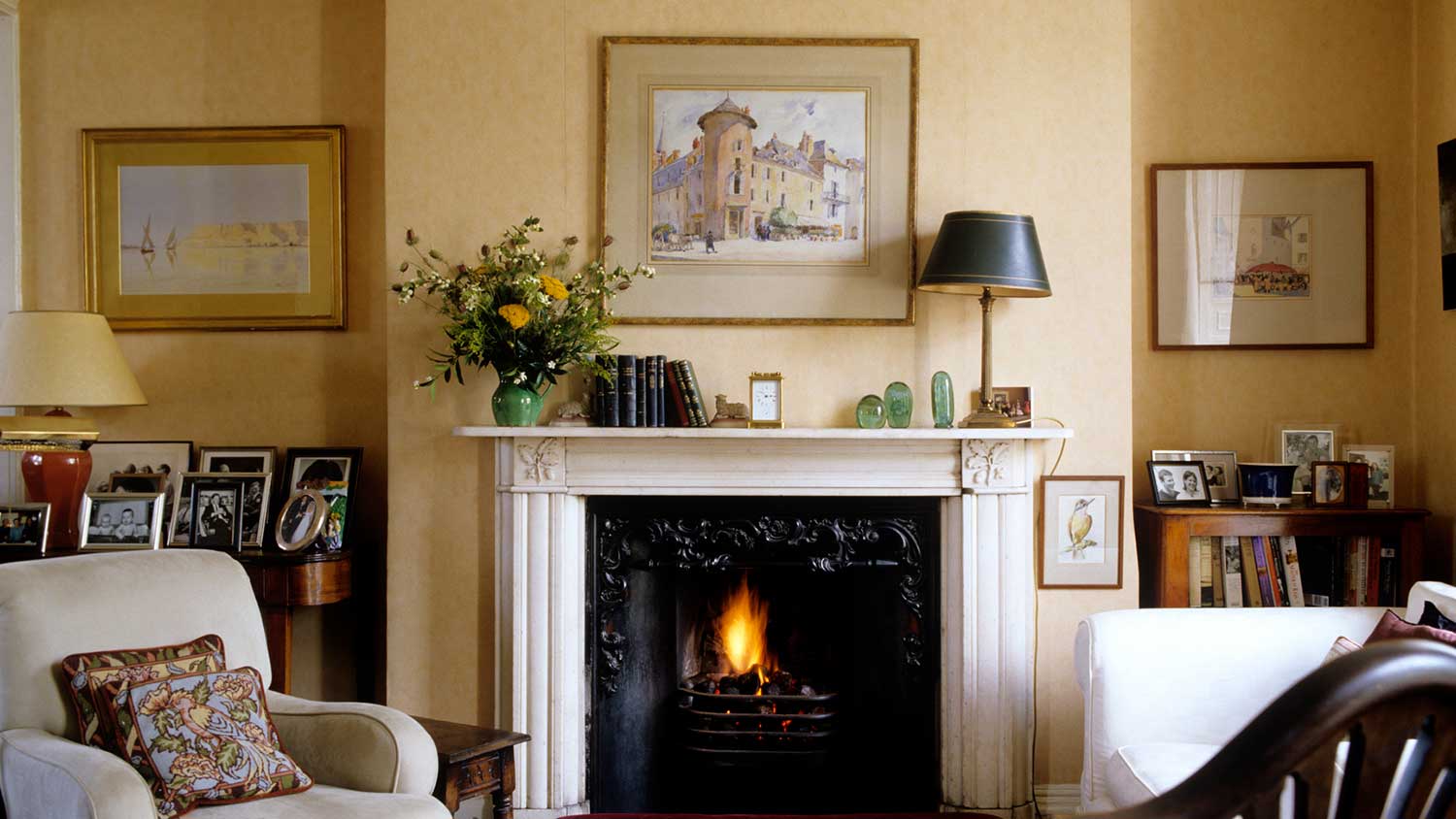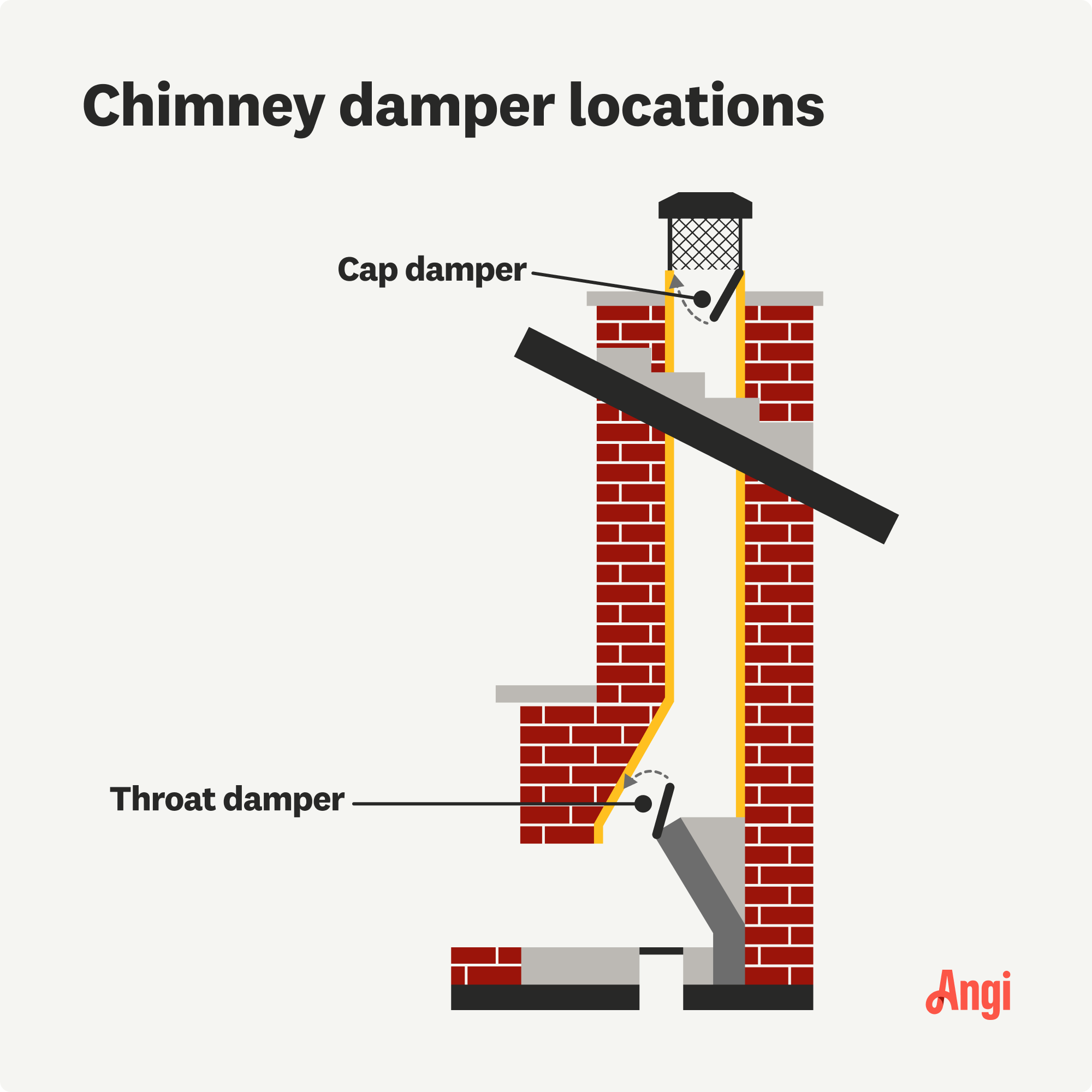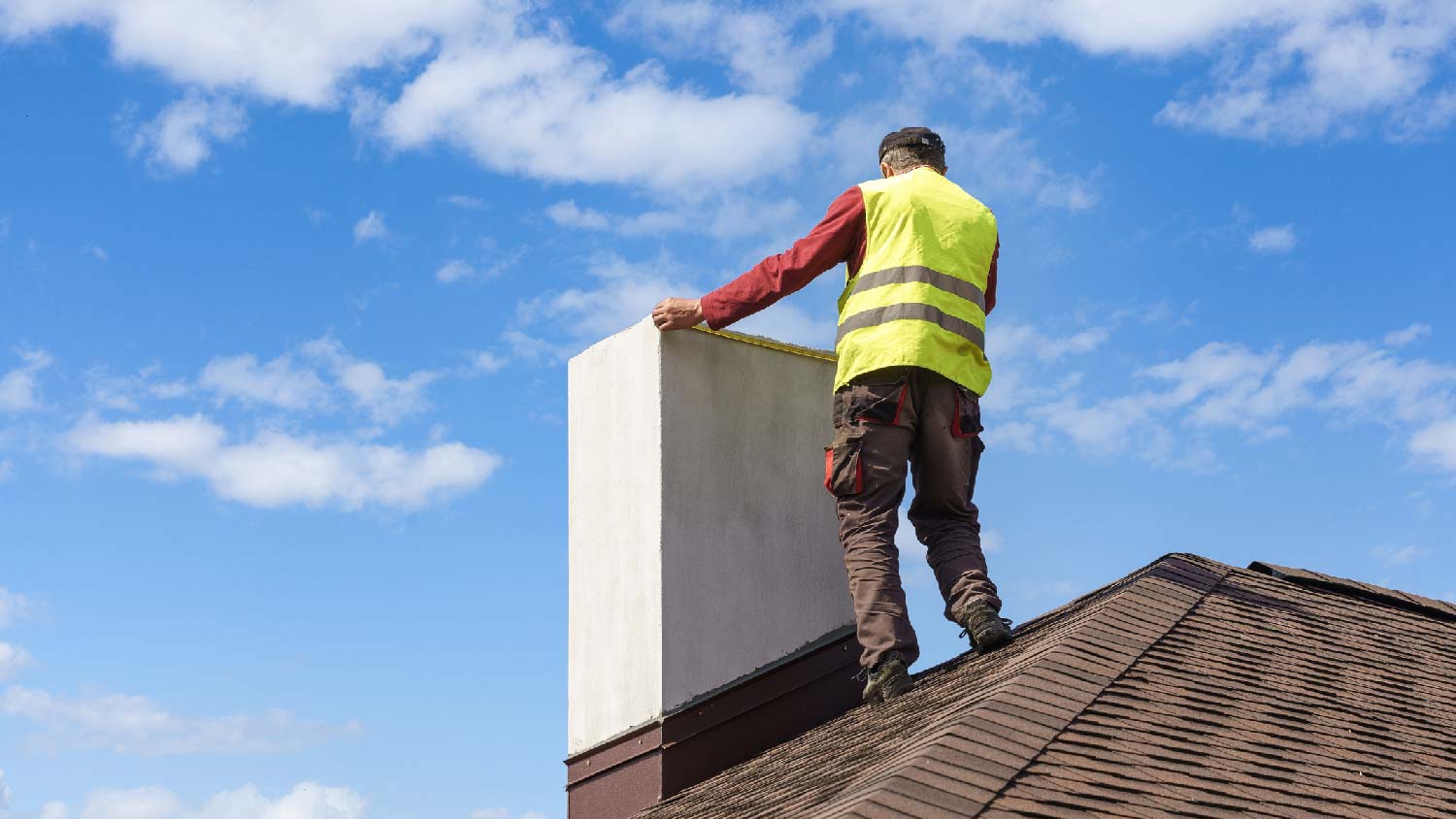Chimney Damper vs. Flue: What’s the Difference?
Lack of a functional chimney damper and flue can turn your cozy fire into a fire hazard


The chimney flue moves smoke through the chimney while the damper controls airflow.
Chimney dampers are made from steel or cast iron while flues are made from clay or steel.
Chimney dampers are compatible with DIY installation, but chimney flues should be installed by a pro.
Annual inspection and cleaning are essential to keep the chimney damper and flue free from creosote buildup.
Your chimney might look like a simple structure, but it’s built from several essential components to help keep your home safe. Two of these components are the chimney flue and the damper. You can get by without knowing the difference between a chimney damper versus a flue. However, understanding the part each plays in your home’s safety can help you properly maintain your chimney before it becomes a fire hazard. This guide explains the main differences you need to know.
What Are the Differences Between a Chimney Damper and a Flue?
The chimney damper and flue are often confused, but each has a distinct purpose. The flue is the pipe inside the chimney that allows smoke to move from the fireplace to the outside. The damper is a plate that sits just above the firebox and controls the airflow. A functional chimney needs both a damper and a flue.
| Type of Difference | Chimney Damper | Chimney Flue |
|---|---|---|
| Use | Airflow control | Smoke removal |
| Appearance | Steel or cast iron | Clay or stainless steel |
| Installation | DIY or professional | Professional |
| Maintenance | Annual inspection | Annual inspection and cleaning |
| Cost | Less expensive | More expensive |
Usage Differences

A chimney damper is a flap inside the chimney, usually just above the fireplace. When you light a fire, the damper must be open to allow smoke to escape through the chimney. When open, the damper regulates the airflow to the firebox, which fuels the fire and keeps it burning. When closed, the damper prevents energy loss and stops critters from entering your home through the chimney.
The chimney flue is a pipe that runs the length of your chimney to let smoke outside safely. It has a flue liner to protect the chimney masonry from creosote buildup, heat damage, and other hazards.
Appearance Differences

If your chimney is functioning correctly, you won’t see the flue or the damper. The flue is a long pipe that runs the length of your chimney and is protected by a chimney liner, also called a flue liner. Many flue liners are made from clay, but you can also opt for stainless steel. Clay liners are cheap but difficult to repair and prone to cracking. Stainless steel liners are more durable than clay liners but have a heftier price tag.
Dampers are often made from heat-resistant materials like steel or cast iron. They usually have silicone around the edges to help form a tight seal when closed to prevent airflow. Most dampers are operated manually with a handle accessible from the firebox or the fireplace wall.
Installation Differences
Proper flue installation is essential to the safety of your chimney. If you have experience working with chimneys, you may be able to learn how to install a flue liner yourself (though this isn’t a job for a novice). But in most cases, whether installing a new flue or replacing a damaged liner, leaving this job to a chimney repair pro near you is best.
A pro will measure your chimney, recommend the best flue liner, and install it safely. You can expect to pay $400 to $1,250 in labor costs alone to install a chimney flue liner.
Installing a chimney damper yourself is possible—especially if you’re replacing an existing damper. Simply remove the damper from the rod holding it in place, take it to a fireplace store, and purchase a new one. Then, install the new damper back into the rod and test to ensure it works correctly. If you’re not confident in your DIY abilities or worried about installing it safely, a chimney pro can help install the damper properly.
Maintenance Differences

Maintaining your chimney damper and flue is easy enough. An annual chimney inspection can catch any issues before they become severe (and expensive to fix). Chimney repairs cost $455 on average but can cost as little as $160 if you fix the issue while it’s minor. You can also learn how to repair a chimney flue crack yourself to save money—but be aware that this is an expert-level repair.
It’s essential to have your chimney professionally cleaned annually to remove creosote from the flue and damper. Creosote builds up when smoke condenses inside the flue—and if that creosote buildup ignites, it could catch your chimney on fire. A pro knows how to remove creosote from the chimney flue using specialized cleaning tools and products to lower the risk of a house fire. Clay, ceramic, cast-in-place, and metal chimney flues need cleaning once a year to increase efficiency and keep your home safe. On average, a chimney sweep costs $260.
Cost Differences
Flue repairs vary in cost depending on the flue material and the issue. Cracked flue tiles can be repaired for $200 to $400 while installing a new chimney liner costs between $1,500 and $5,000.
Fireplace dampers usually need to be replaced if there’s an issue. The cost to replace a damper depends on the type of damper you choose and the size of your chimney, but expect around $150 to $500.
Frequently Asked Questions
No—though they are related. A flue is a pipe that runs the length of your chimney and carries smoke outside when a fire is burning. The damper is a metal plate that helps control airflow to the firebox, depending on whether it’s open or closed.
Dampers are essential for every chimney. When open, they help move smoke up the chimney so it doesn’t blow back into the house. They help prevent energy loss and also keep out debris and animals when closed.
The simplest way to tell whether your chimney damper is open or closed is to put your hand near the fireplace opening. If you feel a breeze, the damper is open. But if no draft comes from the chimney, the damper is closed.





- What Is a Chimney Flue and Do You Need One?
- What Is a Chimney Damper and How Is It Used?
- Here Are the Most Common Chimney Flue Sizes
- Do Metal Chimney Flues Need Cleaning?
- How to Tackle the 7 Most Common Chimney Problems
- Flue Cap vs. Chimney Cap: What’s the Difference?
- How to Close a Chimney Flue: 4 Easy Steps
- What Is a Chimney Cap, and Why Do You Need One?
- 5 Reasons There’s Water Coming Down Your Chimney in Heavy Rain
- 9 Chimney Maintenance Tips to Ensure Every Winter’s a Cozy One










